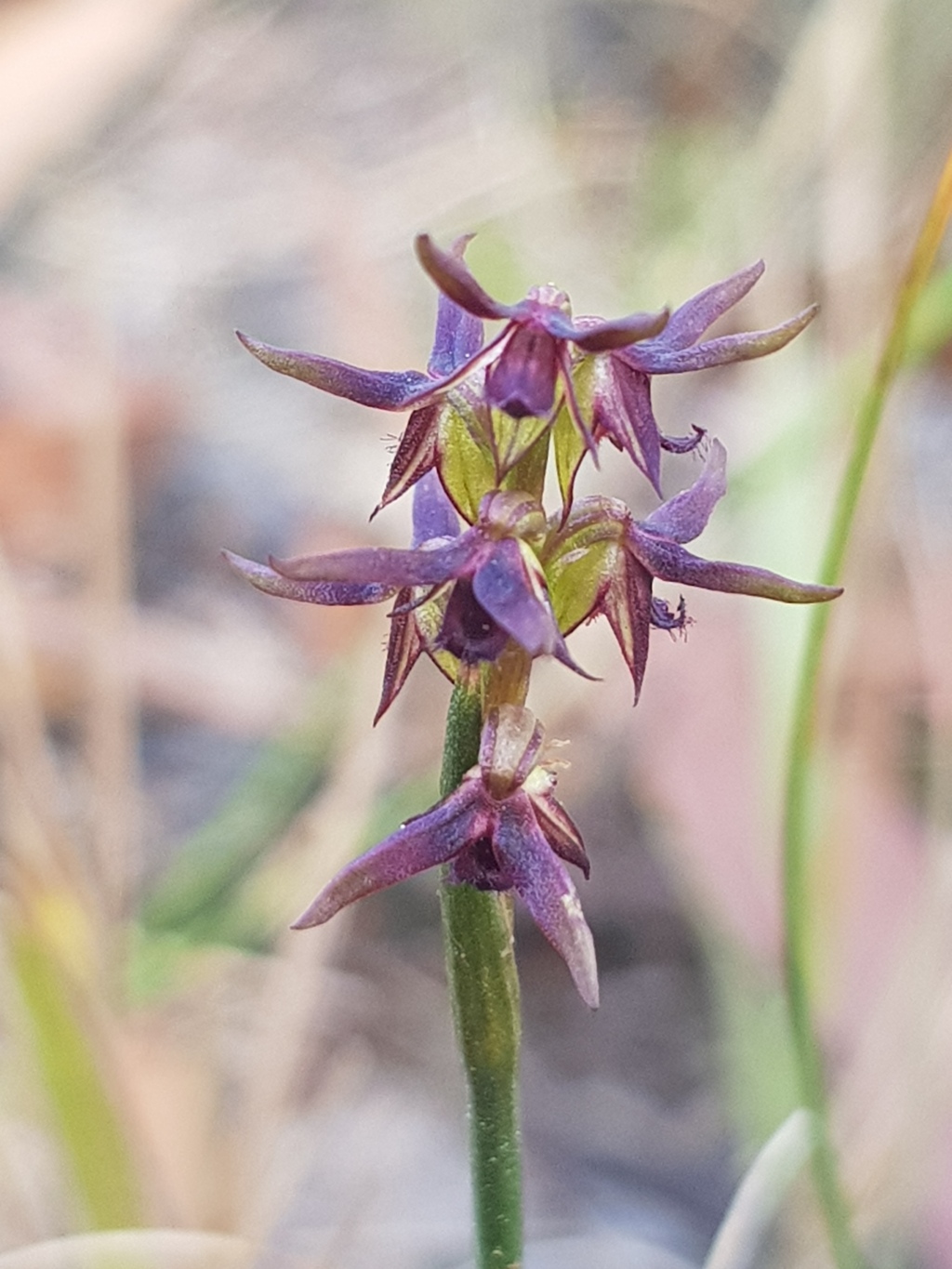Corunastylis archeri
(Hook.f.) D.L.Jones & M.A.Clem.Flowering plants 10–20 cm tall. Leaf lamina appressed to peduncle below the lowest flower. Inflorescence 1.5–3 cm long, moderately dense. Flowers 5–15, yellowish green with purplish suffusions and stripes, 4.5–5 mm across, porrect or nodding; perianth segments spreading widely; dorsal sepal ovate, 4–4.5 mm long, c. 2 mm across, margins hairless, entire, apex acuminate; lateral sepals divergent, linear-lanceolate, 5–5.5 mm long, c. 1.5 mm wide, margins hairless, slightly pouched at base; petals ovate, 3–4 mm long, c. 1.5 mm wide, margins hairless, entire. Labellum broadly ovate, 3–3.5 mm long, 1.6–2 mm across, margins with coarse cilia to 1 mm long, apex pointed, recurved; callus narrow-ovate, extending nearly to the labellum apex. Column wings densely scabrous. Flowers Nov.–Mar.
GleP, VVP, GipP, OtP, WaP, Gold, CVU, GGr, DunT, NIS, EGL, EGU, WPro, HSF, HNF, MonT, VAlp. Widespread across Victoria in many habitats including open forest, heathland, scrubland and swamp margins.
Similar to C. ciliata, but that species has a greenish perianth with contrasting reddish labellum with shorter, sparser marginal hairs. Corunastylis arrecta has entirely dark purplish flowers, erect and more or less parallel lateral sepals and favours montane to subalpine habitats.
Jones, D.L. (1994). Genoplesium. In: Walsh, N.G.; Entwisle, T.J., Flora of Victoria Vol. 2, Ferns and Allied Plants, Conifers and Monocotyledons, pp. 886–893. Inkata Press, Melbourne.
 Spinning
Spinning

